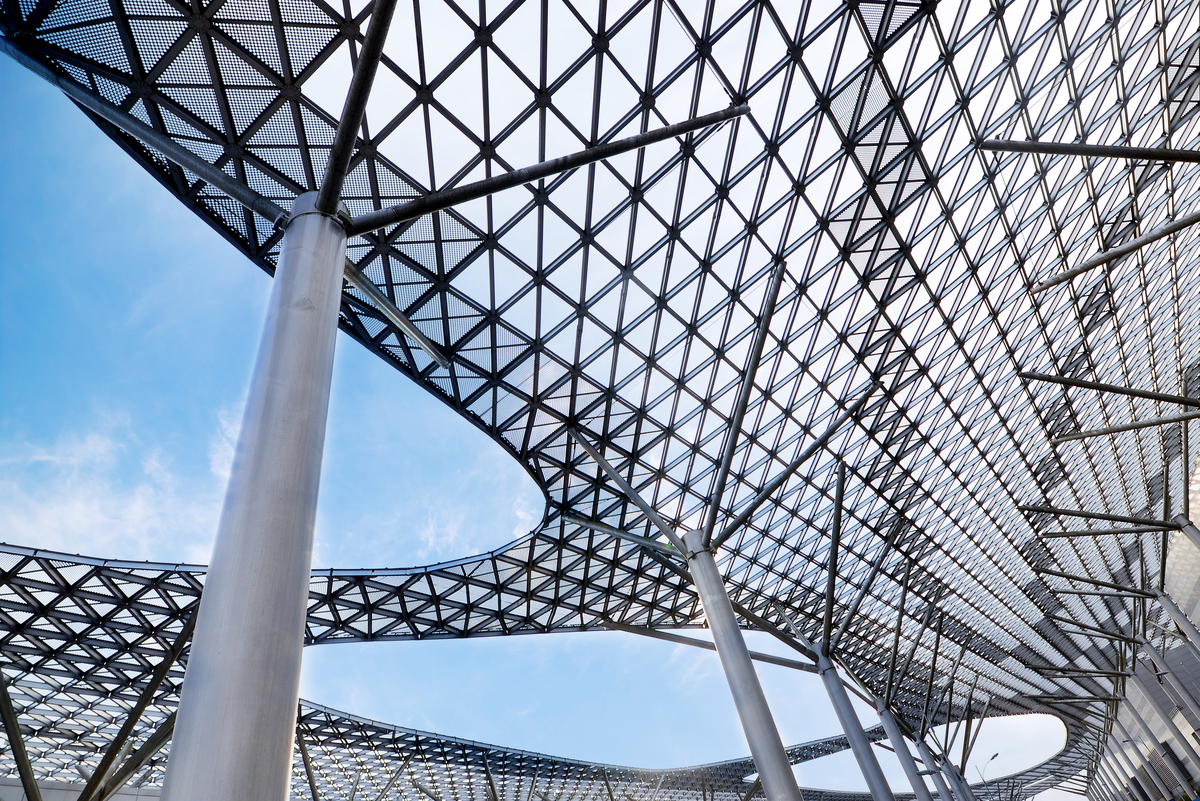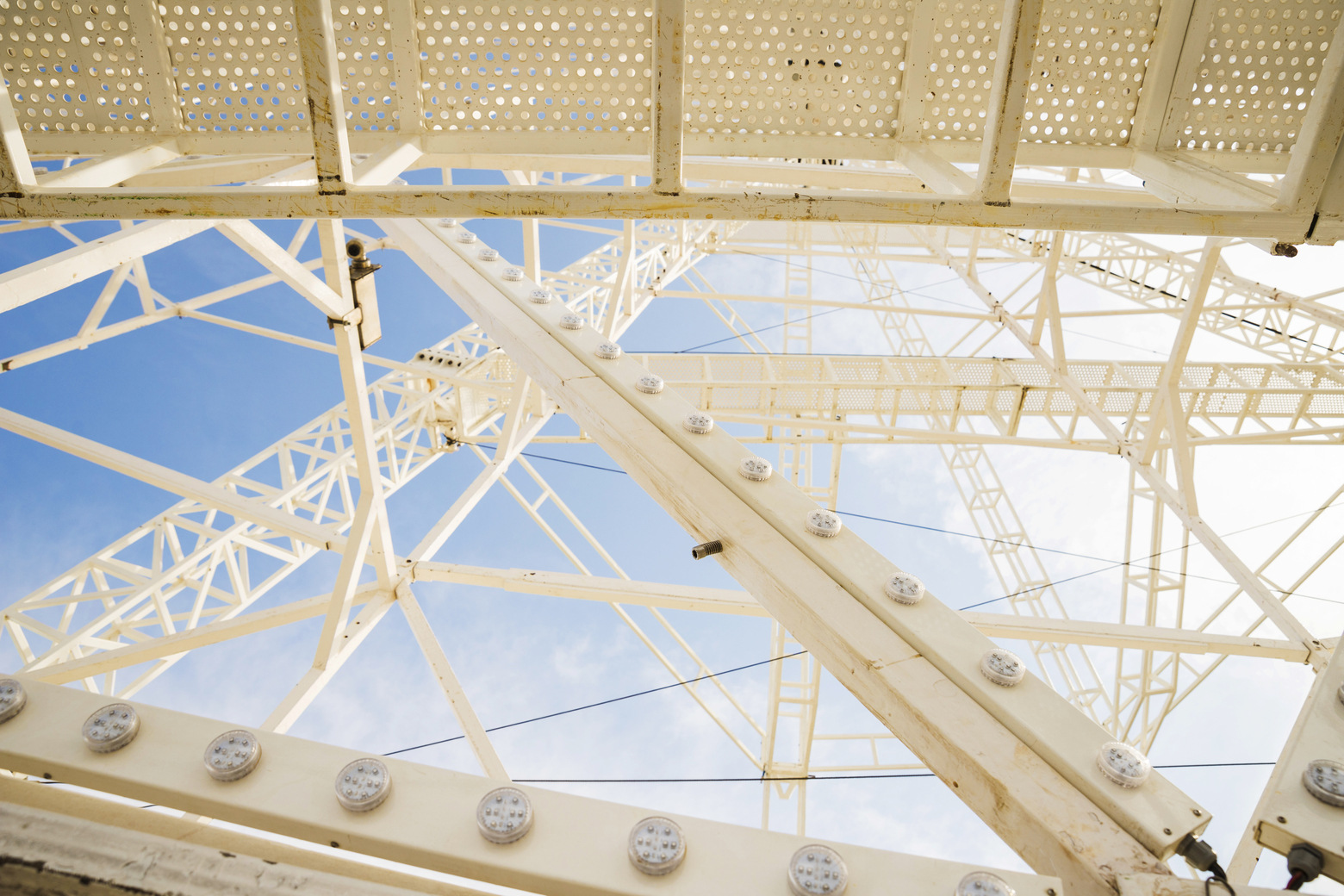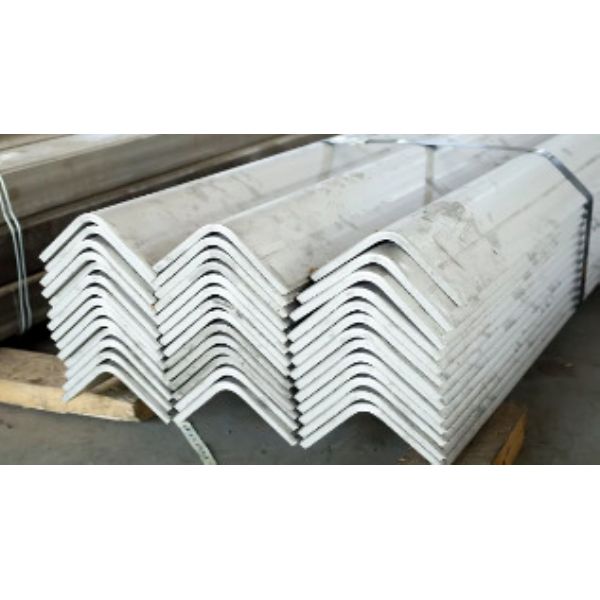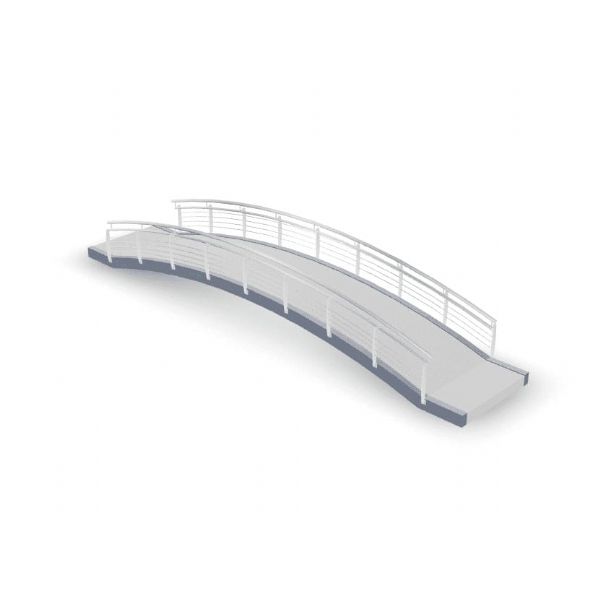In modern construction, the choice of structural support can determine the strength, durability, and overall success of a project. Among the many options available, Steel Trusses have become the preferred solution for architects, engineers, and builders aiming for long-lasting performance. Known for their exceptional strength, resistance to environmental challenges, and ability to span large areas without compromising stability, steel trusses deliver advantages that go far beyond traditional wood or concrete alternatives.
Whether applied in residential housing, commercial complexes, or massive infrastructure projects, metal Trusses stand out as a reliable, cost-effective, and sustainable investment for the future of construction.
Understanding Steel Trusses
What Are Steel Trusses?
Steel Trusses are advanced structural frameworks made from interconnected steel elements arranged in triangular configurations. These triangles form one of the most stable geometric shapes in engineering, allowing trusses to distribute weight and stress efficiently across an entire structure. By transferring loads from one point to another, metal Trusses minimize bending and deformation, ensuring that buildings, bridges, and roofs maintain long-term structural integrity.
At their core, a steel truss serves as a bridge between strength and economy — providing exceptional performance while using less material than conventional solid beams. This makes them a cornerstone of modern construction, offering the perfect balance between durability, flexibility, and cost efficiency.
A typical Steel Truss consists of three main components:
- Top Chord: The upper longitudinal member, designed to handle compressive forces from the roof or deck loads.
- Bottom Chord: The lower longitudinal member, primarily under tension, supporting ceilings or lower surfaces.
- Web Members: The diagonal and vertical components connecting the top and bottom chords, forming a rigid triangular pattern that stabilizes the entire structure.
Together, these elements work harmoniously to resist bending, distribute loads evenly, and maintain the geometric rigidity that makes metal Trusses so reliable.
Types of Steel Trusses
The design versatility of MetalTrusses allows them to meet the demands of different architectural and engineering applications. Below are the most common types used across industries:
- Pratt Truss:
Characterized by diagonal members sloping toward the center, the Pratt truss efficiently handles both tension and compression. It’s a popular choice for long-span bridges and industrial roofs due to its ability to distribute loads evenly while minimizing material use. - Warren Truss:
Featuring equilateral triangles, the Warren truss ensures uniform stress distribution throughout the framework. Its simplicity and strength make it a favorite for both bridges and modern architectural designs. - Howe Truss:
The Howe truss is essentially the inverse of the Pratt. The diagonals slope outward, placing them under compression while the verticals handle tension. It’s ideal for applications where load direction frequently changes, such as roofs or railway bridges. - Fink Truss:
Widely used in residential and light commercial roofing, the Fink truss combines efficiency and economy. Its characteristic “W” web design offers excellent load distribution while minimizing weight, making it ideal for pre-engineered steel buildings. - Customized Trusses:
For unique architectural forms or special loading conditions, engineers design customized Steel Trusses tailored to the project’s specific span, shape, and load requirements. From curved rooflines to space frame systems, steel’s flexibility allows endless design possibilities.
Each of these truss types can be adapted to the project’s environmental conditions, aesthetic goals, and structural needs — proving why Steel Trusses are one of the most versatile systems in construction today.
Common Applications of Steel Trusses
Metal Trusses are used in virtually every sector of modern construction, thanks to their strength-to-weight ratio, cost-effectiveness, and adaptability. Below are some of the most prominent applications:
- Residential Buildings:
In modern homes and villas, Steel Trusses provide a strong and lightweight alternative to wooden rafters. They allow for larger open spaces, more design freedom, and improved resistance to pests and moisture — all while reducing maintenance costs over time. - Commercial Complexes:
Office towers, shopping malls, and entertainment centers often use Metal Trusses to achieve large column-free interiors, ideal for flexible floor layouts, skylights, and expansive roofs. - Industrial Warehouses:
In factories, logistics hubs, and storage facilities, Steel Trusses support heavy roofing systems and cranes while maintaining structural lightness. Their quick installation and durability make them ideal for large-scale industrial use. - Bridges and Large-Span Structures:
For bridges and infrastructure, Metal Trusses offer excellent load-bearing capacity with minimal self-weight. Their ability to span hundreds of meters makes them invaluable for long-span bridges, overpasses, and railway structures. - Sports Arenas and Auditoriums:
The vast open areas required in sports and event facilities rely heavily on Steel Trusses. They enable designers to create wide, unobstructed spaces that maintain both aesthetic appeal and safety under dynamic loads.
These varied applications highlight the adaptability of Metal Trusses in meeting architectural vision, engineering efficiency, and construction economy — all within a single structural system.
Advantages of Metal Trusses Over Traditional Materials

Strength and Load-Bearing Capacity
When compared with traditional materials like wood and concrete, Steel Trusses stand out for their remarkable strength-to-weight ratio. Steel’s high tensile and compressive strength allows it to carry heavier loads over longer spans without intermediate supports. This capability not only reduces material costs but also creates more usable interior space — a key advantage for modern architecture and large-scale industrial design.
Unlike wood, which can weaken over time due to moisture or insect damage, Metal Trusses maintain consistent performance throughout their lifespan. And compared to concrete, they provide similar or greater strength with far less weight, reducing the strain on foundations and overall structural load.
Durability and Longevity
Steel Trusses are built to endure. Resistant to warping, cracking, and decay, they perform reliably for decades under varying climatic conditions. Their resilience against rust, especially when galvanized or coated, ensures that even in humid or coastal environments, corrosion remains minimal.
Moreover, Steel Trusses are immune to biological degradation — they won’t rot, host termites, or attract mold. This long-term stability translates into reduced maintenance costs, fewer repairs, and a longer service life than most other materials can offer.
Fire Resistance
One of the most critical benefits of Metal Trusses is their exceptional performance in fire situations. While timber trusses ignite and lose strength quickly, steel retains its structural integrity for much longer under high heat.
By applying fire-resistant coatings or intumescent paint, the thermal resilience of Steel Trusses can be significantly enhanced, offering valuable time for evacuation and fire control — a crucial factor for safety in residential, commercial, and public buildings.
Flexibility in Design
Modern architecture often demands flexibility — sweeping roofs, irregular shapes, and open interiors. Steel Trusses deliver this creative freedom. They can be fabricated into curved, triangular, or polygonal geometries, supporting innovative structural aesthetics without compromising strength.
Because of their modular nature, Metal Trusses integrate seamlessly with other materials like glass, aluminum, or concrete, enabling hybrid structures that combine beauty with performance. Whether for minimalist designs or complex stadium roofs, Metal Trusses make architectural imagination a reality.
Sustainability and Eco-Friendly Choice
Sustainability is no longer an option — it’s a necessity. Steel Trusses contribute greatly to green construction because steel is one of the most recyclable materials on Earth. After decades of service, trusses can be dismantled, melted, and reused with little loss of quality, reducing construction waste significantly.
Using Steel Trusses also helps curb deforestation since they replace wooden trusses commonly used in traditional structures. Additionally, advancements in steel production now allow for energy-efficient manufacturing and lower carbon emissions, aligning with LEED and other environmental certification standards.
Cost-Effectiveness of Metal Trusses
Initial Investment vs. Long-Term Savings
While Steel Trusses often come with a higher upfront cost compared to wood or reinforced concrete, they deliver impressive long-term financial benefits that far outweigh the initial expense. The strength and longevity of steel translate into fewer structural repairs, minimal maintenance, and significantly longer service life.
Over time, these savings accumulate, making Steel Trusses one of the most cost-efficient investments in construction. Because they resist corrosion, pests, and decay, property owners avoid the recurring costs associated with replacing weakened beams or repairing termite damage — issues that frequently plague traditional materials.
Furthermore, steel structures tend to retain their value over decades, providing not just operational savings but also higher property resale potential. In large commercial or industrial settings, these savings can translate into thousands of dollars annually in reduced maintenance and operational costs.
Additionally, the energy efficiency associated with Steel Trusses — especially when paired with insulated panels or reflective roofing systems — further contributes to long-term savings by reducing heating and cooling demands. In this sense, steel is not just a structural choice but a financially strategic one.
Lower Construction Time and Labor Costs
Another major financial advantage of Steel Trusses lies in the construction phase. Traditional materials like concrete and timber often require extensive onsite fabrication, curing time, or custom cutting. By contrast, Steel Trusses are typically pre-fabricated in controlled factory environments with exact precision using advanced technologies such as CNC cutting and robotic welding.
This pre-engineering process ensures that all truss components arrive onsite ready for assembly, significantly reducing construction timelines. Quick installation means lower labor costs, fewer delays, and faster project completion — a major benefit for contractors and developers operating under tight schedules.
Because steel components are lighter and easier to handle compared to concrete, the need for heavy lifting equipment is also minimized. This efficiency leads to additional savings in machinery rental, fuel, and overall project overheads.
From small residential developments to large-scale commercial towers, the ability to install Steel Trusses rapidly and accurately not only cuts costs but also enhances overall project productivity and quality assurance.
Insurance Benefits
A lesser-known yet important financial advantage of Steel Trusses is their positive impact on insurance premiums. Buildings that incorporate steel framing systems are often considered lower-risk by insurance providers due to their resilience against fire, weather, and biological damage.
Wooden trusses are highly flammable and susceptible to termites, while concrete can crack under stress or environmental changes. Steel Trusses, however, maintain their integrity under extreme conditions such as high winds, earthquakes, and heavy snow loads.
Their fire-resistant properties, combined with the use of protective coatings and galvanized finishes, make them a safer structural option — resulting in lower risk assessments and, consequently, reduced insurance costs. For commercial buildings and industrial facilities, these insurance savings can become significant over the building’s lifespan.
Structural Performance Benefits of Steel Trusses
Lightweight Yet Strong
Despite being one of the strongest construction materials available, Steel Trusses are remarkably lightweight. This superior strength-to-weight ratio reduces the overall load on foundations, enabling more efficient designs and potentially lowering foundation construction costs.
In large-scale projects like warehouses or stadiums, using Metal Trusses means achieving longer spans without intermediate supports — creating open, column-free spaces that enhance functionality and design flexibility.
Their lightweight nature also simplifies logistics and installation, allowing contractors to transport and assemble trusses with fewer resources, further reducing costs and project complexity.
Resistance to Environmental Factors
Durability is one of the hallmarks of Steel Trusses. When properly treated with galvanization or protective coatings, they can resist corrosion, moisture, and extreme weather for decades.
Unlike wood, which absorbs water and expands, steel remains dimensionally stable under varying temperature and humidity conditions. This makes Steel Trusses ideal for coastal areas, tropical climates, or regions with heavy rainfall.
Moreover, their performance during seismic events and hurricanes has been extensively proven. Steel’s ability to flex without breaking allows trusses to absorb and dissipate energy during earthquakes — a critical safety feature that concrete and timber often lack.
In flood-prone or snow-heavy environments, Steel Trusses maintain their form and load capacity without sagging or cracking, ensuring consistent performance throughout the building’s lifetime.
Uniform Quality and Reliability
One of the most overlooked but vital benefits of Steel Trusses is their uniformity in quality. While timber varies naturally in grain, density, and moisture content, steel is manufactured under strict quality control standards. Each steel truss is designed, fabricated, and tested to meet precise engineering specifications, ensuring consistent structural performance.
This uniformity eliminates many of the variables and risks found in traditional materials. Builders and engineers can rely on Steel Trusses to deliver exact dimensions, predictable load behavior, and consistent performance — qualities essential for precision-driven projects like airports, bridges, or industrial facilities.
The manufacturing process also includes rigorous testing for tensile strength, weld integrity, and corrosion resistance, ensuring that every piece meets international structural standards. As a result, Steel Trusses provide peace of mind for both architects and clients, offering reliability that stands the test of time.
Steel Trusses in Different Project Types

Residential Construction
In modern housing, Steel Trusses are rapidly replacing timber systems due to their superior performance and longevity. Homeowners and builders alike appreciate the combination of strength, lightness, and design flexibility they provide.
Their precise engineering ensures roofs remain perfectly aligned and structurally sound for decades without warping or termite damage. Additionally, steel’s compatibility with prefabricated and modular housing systems allows for quicker assembly and cleaner construction sites.
For contemporary villas and energy-efficient homes, Steel Trusses also support innovative roofing materials, solar panels, and insulation layers, enhancing both aesthetics and energy performance.
Commercial Buildings
In commercial and office developments, space and design flexibility are key. Steel Trusses enable architects to create large, open interiors without the need for obstructive support columns. This makes them perfect for shopping malls, event halls, and office buildings that demand wide, clear spaces and creative layouts.
The aesthetic potential of Steel Trusses — when exposed or integrated into modern architectural design — adds a sense of industrial elegance and sophistication. Combined with glass facades or skylights, they help create bright, open, and visually striking interiors that align with contemporary commercial architecture trends.
Industrial Applications
In factories, warehouses, and logistics hubs, Steel Trusses are indispensable due to their capacity to bear heavy loads, accommodate cranes, and support large-span roofs. Their resistance to vibration and deflection under machinery load makes them a practical and safe choice for industrial environments.
Moreover, their low maintenance and long service life minimize operational disruptions — a critical advantage for industries where downtime directly affects profitability. Many modern logistics and manufacturing centers rely on Steel Trusses for their balance of strength, versatility, and efficiency.
Infrastructure Projects
Steel Trusses are at the core of many global infrastructure marvels, from iconic bridges to expansive airport terminals. Their ability to span large distances while maintaining light weight and high strength makes them ideal for projects requiring both functionality and architectural appeal.
In bridge construction, for instance, Steel Trusses offer an optimal balance of tensile and compressive capabilities, allowing for long spans with minimal material use. For airports and railway stations, they provide vast open areas with superior load distribution and minimal maintenance requirements — ensuring safety and performance over decades.
Agricultural Structures
Agricultural buildings face unique challenges such as humidity, temperature fluctuations, and exposure to corrosive elements. Steel Trusses have become the material of choice for barns, greenhouses, and storage sheds because they resist these environmental factors with ease.
Their lightweight design allows farmers to cover large areas efficiently, while their open-web structure promotes better air circulation — essential for crop and livestock environments. Additionally, the durability of Steel Trusses reduces maintenance costs for rural projects where long-term resilience is key.
Comparison Table: Steel Trusses vs. Wooden Trusses vs. Concrete Structures
| Feature | Steel Trusses | Wooden Trusses | Concrete Structures |
|---|---|---|---|
| Strength & Span | High | Medium | High but heavy |
| Durability | Excellent | Low (rot/pests) | Very high |
| Fire Resistance | High | Low | High |
| Sustainability | High (recyclable) | Low (deforestation) | Medium (energy-intensive) |
| Cost Efficiency | Long-term savings | Low upfront cost | Expensive upfront |
| Installation Speed | Fast | Medium | Slow |
| Maintenance | Minimal | Frequent | Moderate |
Future of Steel Trusses in Construction
Emerging Trends
Innovations like smart materials, nanotechnology coatings, and lightweight high-strength alloys are reshaping the potential of Steel Trusses in modern architecture.
Role in Sustainable Cities
As cities embrace renewable energy and green design, Steel Trusses play a vital role in sustainable construction, reducing environmental impact while enhancing efficiency.
Market Growth Predictions
Global demand for Steel Trusses continues to rise, particularly in developing regions investing in industrial and infrastructure expansion.
Conclusion
The Steel Truss has revolutionized modern construction by offering unmatched strength, flexibility, and sustainability. From residential roofing to massive bridges, Steel Trusses provide long-term durability, reduced maintenance, and superior performance under diverse conditions.
Choosing Steel Trusses is more than a structural decision — it’s an investment in the future of architecture and engineering, where innovation meets endurance.






